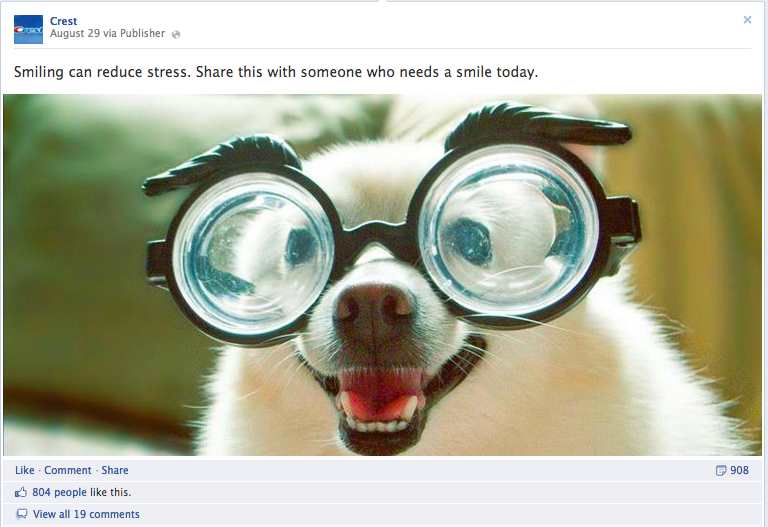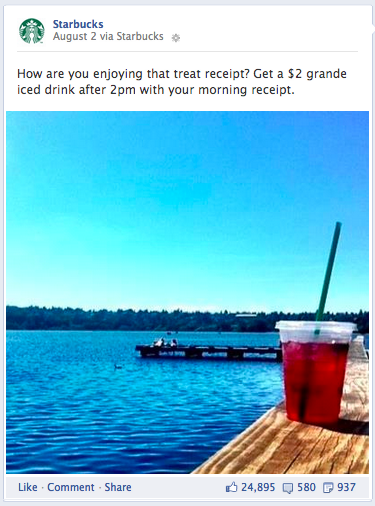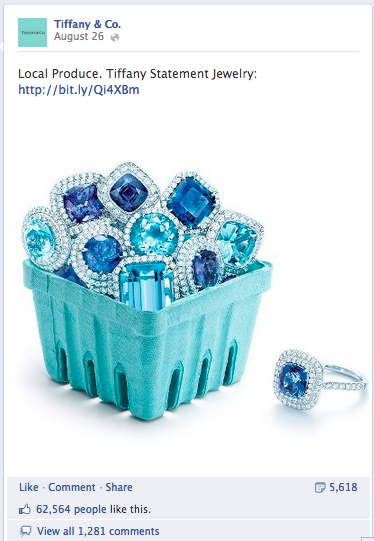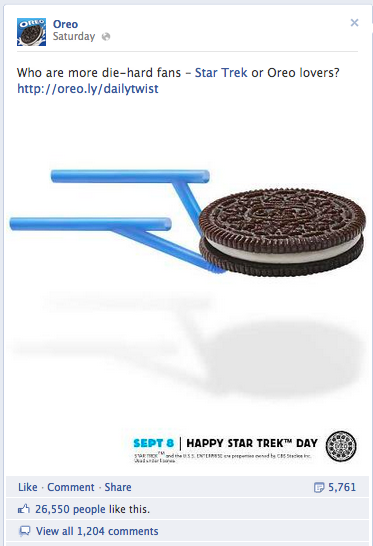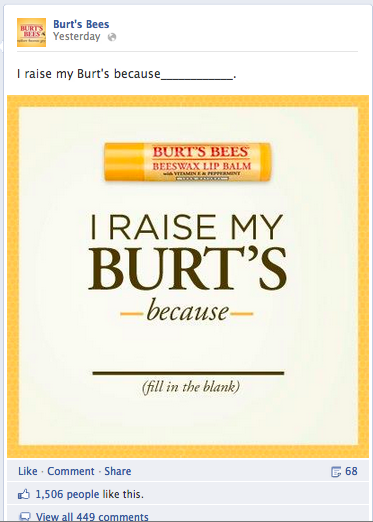Posts Tagged ‘AJGpr’

As reported on November 20, 2018, in an article in the New York Post, “when it comes to fidelity in relationships, a new surprising survey found that 49 percent of men did not think kissing someone else was cheating.” AJGpr client, Dr. Fran Walfish, Psy.D., a leading Beverly Hills-based child, couple, and family Psychotherapist recently weighed in on this newly released survey by the BBC and said that these men are in “denial.” Walfish went on to say, “The guy feels a tinge of guilt for what he knows is wrong behavior, and he can’t tolerate or bear that feeling of guilt, so he rationalizes it by telling himself it’s not cheating.”
For the full article click here.

I found this great post by Arik C. Hanson, for his blog Communications Conversations which he posted back in September and I wanted to share it with AJGpr blog readers.
Last week, I talked about the obvious trend of “art direction” when it comes to content on Facebook. However, what’s relatively shocking is the few number of brands that have caught on to this huge content shift on the biggest social platform.
I mean, by and large, many of the larger, Fortune 500 brands are on board. Mostly because they have huge agencies assisting or guiding them (not all the credit goes to the agencies, but it surely mitigates the risk that you’d miss a trend like this when you employe a huge, international agency to keep you AHEAD of trends like this). Look just below those larger companies though, and you’ll find an overwhelming amount of companies that are still playing by the 2010 Facebook rules–share links, ask questions, use polls.
Those rules are virtually dead, my friends. Welcome to the visual era of Facebook (and, oh by the way, I really should have welcomed you about 4-5 months ago).
Truth be told, imagery is everything on Facebook right now. So, what can you do to catch up? Here are a few simple ideas (that seemingly all the early adopters are using):
Art direct shots on the fly
I know this has been well documented by now, but you know what I love most about what Starbucks does on Facebook? It’s the ad-hoc shots they share. These are shots that are not taken by a full-blow production team, but instead (most likely–my guess) by one of their PR or social media folks “on the fly.” It’s the way of the new world. Brands that are nimble enough to pull these sorts of visuals off quickly are going to succeed in the new Facebook world.
Use (pieces of) ads as the post
Look what Tiffany’s is doing here. Simply using pieces of ads as the visual and pairing it with an “ad-like” headline is enough to earn a few likes/comments.
Branded photos still work
As much as everyone wants to be Oreo right now (don’t lie, you do), good, old-fashioned branded photography still works in terms of engagement. Remember, most of your fans on Facebook are there because they are EXISTING customers. They’re just looking for reasons to like your posts. Sometimes you just don’t need to overthink it. Give them branded photography–like what Burberry does here.
Celebrate the odd dates–creatively
Oreo solved the problem so many brands have: How do we “celebrate” all these odd dates we want to recognize on Facebook, but do it in a way that inspires engagement? As we all know by now, Oreo has done it brilliantly by using their product in a creative way. I’m not say you need to go follow Oreo’s lead, but how can you use your creative flair to do the same? Visually.
Still use quotes–just make them visuals
You know those quotes you use all the time on Facebook via text? Here’s the thing–they work MUCH better as visuals. Just see what Dove has done here. You’re seeing more brands taking this approach–because it WORKS.
Make regular posts visual
You know those run-of-the-mill text posts that worked so well 4-5 months ago? Fill in the blank posts, for example? Well, why not make those visual, too? Just look what Burt’s Bees has done here. Perfect.

At AJGpr, a Los Angeles PR firm, we provide GOOD PR because we:
- tell the client what they need to hear instead of what they want to hear.
- recognize that the best “PR strategy” needs good follow-up.
- are not just about the over-glorified launch. AJGpr helps build and sustain a groundswell of brand support — incrementally changing consumer behaviors via a steady stream of relevant and candid communication to both “media” and “consumers.”
- are proactive and cutting edge in idea generation.
- find the balance.
- leverage pre-existing relationships with influential people — relationships built on trust and credibility earned over years of service.
- always “gets ink” because a good story has been well told to the right people.

After a 6 month search, Studio City, an Emmy Award-Winning Brand Management Company chose AJGpr to launch their new public relations campaign.
Studio City, creates about 8-10,000 TV promos a year. Their clients include Disney/ABC domestic television, NBC Universal, CBS domestic television distribution, 20th Television. They are the marketing agency behind the #1 Syndicated Talk Show – Ellen; the #1 syndicated morning show Live! With Kelly and Michael; the #1 sporting event of 2012 – The Summer Olympic Games; the #1 Drama in Weekend Syndication – Criminal Minds; and the #1 drama on Cable TV – Burn Notice. And now they can add another number #1 show “Katie.”
In addition, they have branched out — and are creating original material for television. Studio City is the creator and producer of the new entertainment news show, Dish Nation distributed by 20th Television (a division of 20th Century Fox). Along with being the show runner for its actual production, Studio City also produced the episodic and launch promos for the 6-week summer test-run. The launch and episodic promos helped grow the audiences from the seven test markets 40%, ultimately convincing 20th Television to pick the show up for a 52 week full series run.

You’ve researched your target list, crafted a great pitch, and sent it out to the appropriate contact. Your pitch was timely and newsworthy. Now what? How do ensure your pitch will avoid getting tossed in the trash and making it to print or the airwaves?
Getting attention has as much to do with the fine art of follow up as it does with the pitch itself.
Think about your contact, the producer, the editor, and walk in their shoes. They are constantly on deadline getting their current news story on-air or in print and perhaps also trying to make it out the door in time to see their kid’s softball game. And all the while, your pitch lands in their mailbox amongst 100 other PR specialists vying for their attention.
If your pitch is as well written as you think it is, and has a catchy subject line and lead paragraph, they might actually save it in midst of their already busy news schedule for further thought – when the time is right. But, more often a pitch can go unanswered and forgotten, if there is no follow-up – because your contact is just busy.
So what do you do? AJGpr, a Los Angeles PR firm, has some tips to share.
Let at least two days go by and call. Why? Because you want to remind your contact that your pitch was sent and get it back on their radar.
But what you do when your contact answers the phone is just as important as a well-crafted pitch? There are rules for the follow up with journalists, and if a break them, your pitch and your relationship make go by the wayside for good. So, make the call and:
Keep it Short, Simple, and Snappy – Your follow-up phone call should last three to four minutes tops. DO NOT RAMBLE. If need be, write a script and practice introducing yourself, reminding the contact (in a few short sentences) why you’re calling, and asking if they’re interested in covering the story. If they say no, thank them for their time and hang the phone up politely
Be Prepared – Your contact may very well be interested in your story, but remember they may also be on deadline when you call. Be cordial and ask when there might be a better time to talk. If in fact, they are interested in hearing the pitch again — be prepared to answer questions, provide quotes and facts, and offer to resend the initial pitch if necessary.
Do Not Sell – This is not the time to SELL the story. If they remember the initial pitch and want to hear more – the door is open. But if they are not interested even the best sales pitch will not persuade them if they’ve already determined that the story is not a fit. So again, say thank you and move on.


